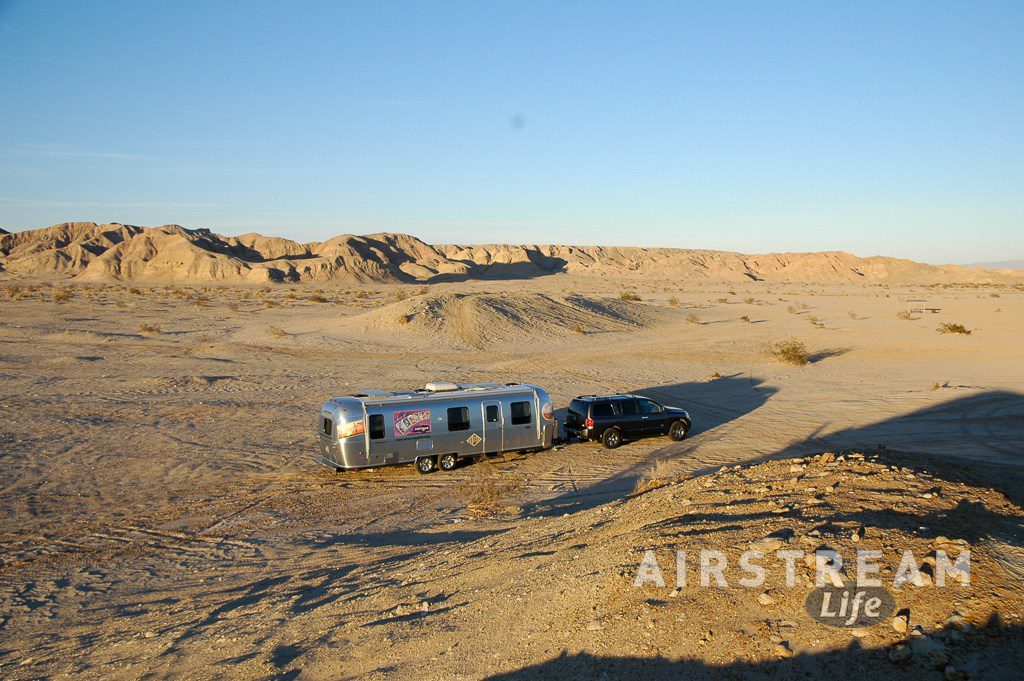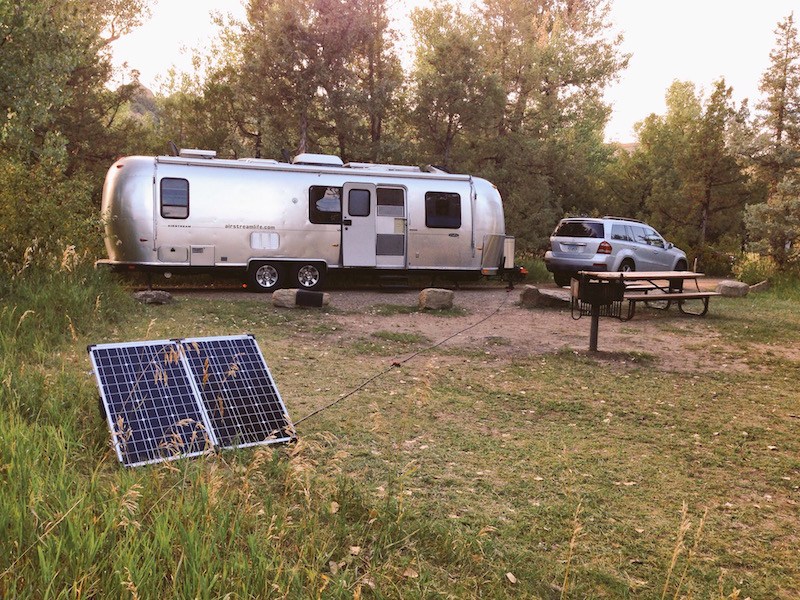Every modern Airstream is pretty well set up for living off the grid, for a day or two. But if you want to get away from crowded campgrounds and park somewhere without hookups for more than a weekend—in other words, boondocking—you’ll want to start upgrading your Airstream and your camping practices a bit.

There are three major limitations to your boondocking experience: water, power and propane. (Other considerations are things like food and sewer capacity, but you’ll probably run out of water or power first.)
The best and least-expensive way to extend your boondocking time is to learn how to conserve. Learn the “navy shower” technique, do less dishwashing or learn to wash very efficiently or use paper plates, replace all lights with LEDs (if they aren’t already), set the furnace temperature lower and sleep with an extra blanket or dog, etc. Conservation takes a little effort and a little practice, but it pays off immediately.
When using the 12 volt batteries you won’t be able to run the air conditioner or microwave, so the remaining big energy consumers are the furnace, water pump, and laptops. Airstream batteries are typically sized with just enough capacity for an overnight or a weekend (if you aren’t running the furnace a lot) because most people don’t use the trailer away from shore power for longer than a night or two.
Once the batteries run out of juice, everything in the trailer goes off: refrigerator (even when running on propane), heat, light, water pressure … even the hitch jack won’t go up or down anymore. So power conservation is important.
To reduce the drain caused by laptops, try using a tablet or your phone instead. An iPad requires about 10-20% of the power of a laptop and can charge quickly from a cigarette lighter plug, instead of requiring an inefficient inverter. (You can pick up USB cigarette lighter adapters easily if you have an older trailer without USB outlets.) Shorter showers and limited dish washing will also cut power consumption by the water pump.

Carrying a portable solar panel can be very helpful if you like to camp where trees shade the Airstream. With a solar panel kit and an extension cable you can put the panels in a spot where the sun hits them. Solar isn’t a perfect solution, but it’s silent, free to operate, eco-friendly, and you don’t have to carry gas. With summertime sun, a pair of solar panels can extend your boondocking time by days.
If you find the two batteries supplied with the Airstream aren’t enough, consider going to larger batteries. This will require some custom work, but you’ll get a lot of value out of it.
In hot weather, try to spend the day out of the Airstream. This cuts down the length of time you’ll need the vent fans. Each vent fan consumes about 2 DC amps, which means three of them running for six hours = 36 amp-hours. That’s a lot of juice, which is put to better use after sunset when the temperatures start to drop.
In the winter, furnace use is the problem. The furnace eats a lot of power (7-10 amps when running) and it’s fairly wasteful of propane too. A catalytic heater is helpful, since it doesn’t use electricity at all, and is much more efficient at turning propane into heat.
Propane isn’t much of a limitation in the summertime, since a pair of 30-lb. tanks will run the refrigerator and water heater for weeks. But in late fall and winter you’ll want to travel with both propane cylinders as full as possible. You can easily find yourself spending an unexpected night along the road with only your propane supply to keep you warm. With freezing nights a tank of propane can be used up in just a few days.
If you are going to be off grid for a while, get a portable tank to carry fresh water. Serious boondockers will find a place in town or nearby to refill their jerry can or water bottles, and bring a little fresh water back to camp after every excursion. Mark the tank “FRESH WATER ONLY”.
After a few days of boondocking it’s nice to hit a full hookup campground for a night just to get everything back in ship-shape. The Airstream will inevitably be full of dirt and gravel tracked in from the campsite, and you might be a bit less fresh than you’d like to be (due to careful conservation of water). Plus there may be various electronic devices that you postponed charging, or the laundry basket might be full, and it will probably be time to get some groceries and dump the tanks if there wasn’t a place to do it before.
We find that having a “recovery” day in a full hookup campground is something we enjoy, with long showers and a chance to get everything ship-shape before heading out for more adventure (or home).




 Blacktop Boondocking…
Blacktop Boondocking…